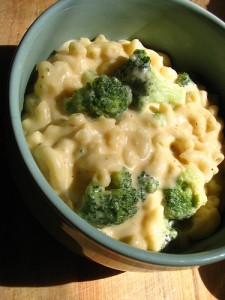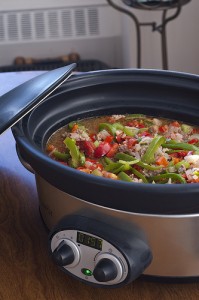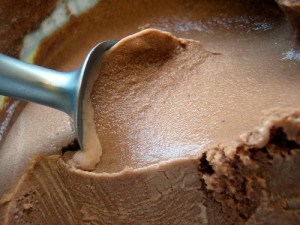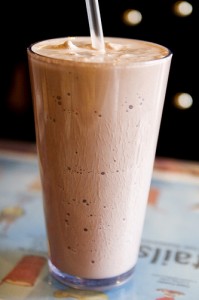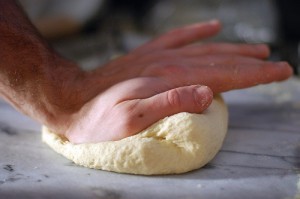This is a guest post by Jennifer, who blogs about frugal and simple living at her blogs Getting Ahead and Our Suburban Homestead.
When Karen asked for guest posts to run while she was in Europe, I knew I had to help. I love her blog and find that we have many similar frugal thoughts. She covers frugality so well, that I thought I would write about something else – healthy eating on a budget. Not everyone can afford to eat all organic foods. While that is the healthiest, it can seem a little drastic. Here are some of things we do to eat a healthier diet while still staying within my $400 a month grocery budget for 6 people.
Read labels.
Reading labels is not hard exactly, but it can seem tedious. Grocery shopping will take longer at first, but once you figure out the items that fit into your new ideals you can just check the label every now and then to make sure nothing has changed. I started reading labels when my daughter was diagnosed with a dairy and egg allergy, so I have been doing it for 9 years now. The things I look for have changed over time. At this point we avoid artificial colors, high fructose corn syrup, dairy and eggs. Yes, even with all those restrictions we still have plenty of options out there. Most people don’t think they have options, but they really do. Cutting out the fake stuff like HFCS and artificial colors is one of the best things you can do for your health. And it only requires buying a different brand many times.
Get back to the basics.
I was somewhat forced into this because of the food allergies, but cooking basic foods with common, basic ingredients is a great way to save money. All those fancy boxes that make a meal are off limits for us. But I can create great meals myself. For instance a dinner might consist of grilled chicken, cous cous and a salad. Another night we might have spaghetti (whole wheat noodles and homemade sauce) and green beans. The fancier a meal is the more it costs.
The fewer ingredients the better.
This goes back to reading labels. If the ingredient list takes up half the box the chances are higher that it has fake stuff. For example Club Crackers have a dozen or so ingredients. Triscuits have 3 or 4. Triscuits stick to the basics in their products. The price is virtually the same.
Grow your own food.
We have a garden at our house and this year I also have a community plot as well. I can or freeze the excess produce to eat all year. That spaghetti and green bean meal from above was made from tomatoes and green beans from my garden. Even if you don’t have a ton of space, you can usually grow something. Container gardening and square foot gardening both provide lots of fresh veggies in a small amount of space. The cost is less and the produce is more nutritious.
Pick your battles.
This is why we avoid HFCS and artificial colors. I could have picked other things, or more things, but I feel pretty good about being able to avoid these while still getting foods that my daughter can eat. If we didn’t have to work around her food allergies I could avoid other things too, but it becomes really difficult at the moment. For me this means that many things I have to buy organic if I am going to buy it all. Many things I just don’t buy. Who needs all that processed junk food anyway? Your battles will probably look different from mine and that is fine.
Look for alternative sources.
I found a great local farm that sells farm fresh eggs for $2 a dozen. You can’t beat that and they are delicious. I have also found a great CSA we are joining this year that will provide organic veggies, fruits, meats, milk, bread and cheese. Check out Eat Local for local sources in your area. If you buy in bulk you can frequently get the good foods for the same price as the grocery store foods.
Stock up when things go on sale.
Organic food items go on sale too. They won’t be free, but they are much cheaper than full price this way. So when the organic ketchup went on sale for half price in February, I bought four bottles. This saves me money in the long run.
By combining these methods I am able to feed my family better foods for less money. We are eating healthier than ever before and thriving because of it. Take the time to figure out a plan for your family and you can too.
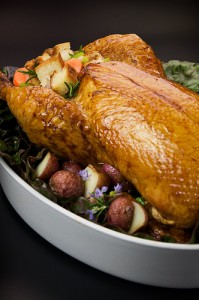 chicken as a fancy Sunday dinner. The truth is, it’s so simple that you can easily make it on a busy weeknight. The price averages 89 cents a pound at my grocery store, which makes it a pretty frugal meal, too, since we always have leftover dark meat to use in other meals like quesadilas or chicken enchilada soup.
chicken as a fancy Sunday dinner. The truth is, it’s so simple that you can easily make it on a busy weeknight. The price averages 89 cents a pound at my grocery store, which makes it a pretty frugal meal, too, since we always have leftover dark meat to use in other meals like quesadilas or chicken enchilada soup.
